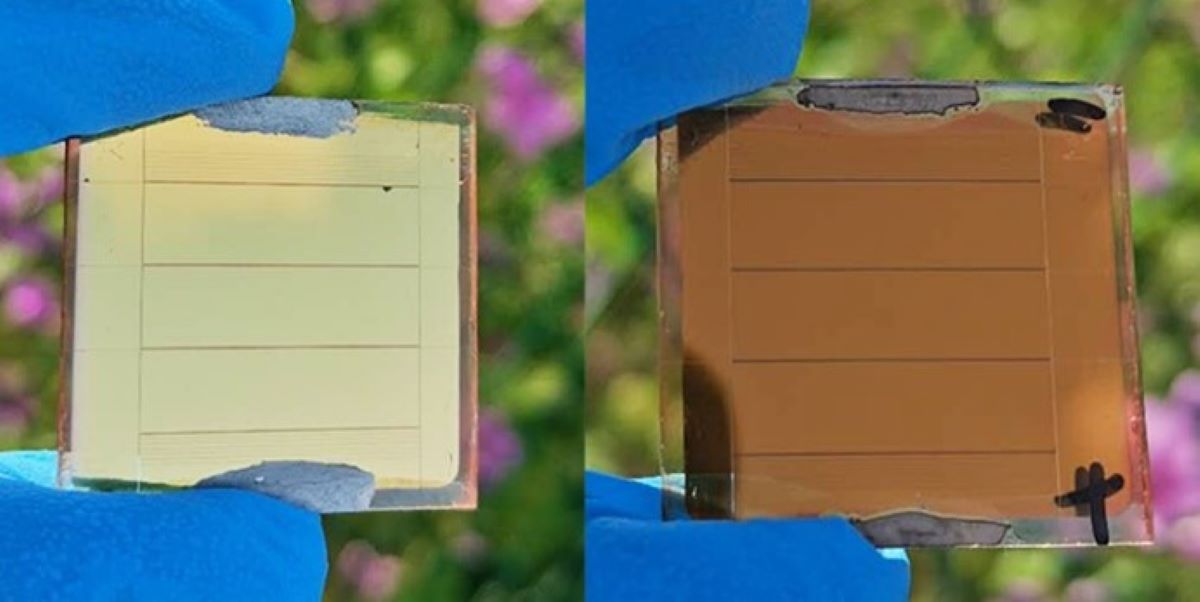Researchers from the Tor Vergata University and the National Research Council in Italy have developed for the first time air-stable solar modules relying on PV cells based on an antimony (Sb) absorber material.
“There has been growing research on lead (Pb) and tin (Sn)-free perovskite alternatives, but we were surprised that only single cells have been reported so far, so we focused on fabricating modules with commercially available equipment. The fact that the Sb-based solar cells we developed had good air and thermal stability enabled us to do all patterning steps in air,” the research's lead author, Thomas M. Brown, told pv magazine.
“The key property of the antimony-based perovskite-inspired materials that we developed is stability, especially compared to other lead-free alternatives,” he added. “Consequently, enhancing efficiency should become the prime focus for Sb-based technology whereas stability should become the focus for Sn-based devices.”
According to the research group, the cells withstood temperature stability tests of up to 85 C in air and all three P1, P2, and P3 laser patterning steps could be performed outside the glovebox, simplifying the manufacturing step. Key to the results were two cations in the precursor mixture.
The solar cells were manufactured with MAxCs3−xSb2I3Cl6 using a one-step spin-coating solution process. The methylammonium (MA) and cesium (Cs) mixed double-cation Sb-cell stacks were made with fluorine-doped compact-titanium oxide (TiO2), mesoporous TiO2, the MAxCs3−xSb2I3Cl6 absorber, a hole transport layer made with conventional Spiro-OMeTAD, and a gold (Au) metal contact.
The cells achieved a power conversion efficiency of 1.5% and its long-term stability was boosted by 60%, with a loss of only 10% after about 1800 h of aging in air, according to the researchers. The mini solar modules built with these cells achieved a 1.2% efficiency over a 2.52 cm2 active area.
The group has plans to investigate applying the technology to indoor solar cells and panels. “This is because we have shown that perovskite technology has high potential for light harvesting in indoor environments and because suitable band gaps for the semiconductors need to be higher under artificial lighting which opens up the possibility of using even antimony-based perovskites for this purpose,” said Brown.
Looking forward, the research team is planning to reduce the device bandgap by adjusting perovskite composition, adjusting the crystallization rate, minimizing defects by introducing additives, and optimizing energy level matching and passivation of defects by interface engineering.
Their findings were introduced in the paper “Air-Stable Lead-Free Antimony-Based Perovskite Inspired Solar Cells and Modules,” published in ACS Energy Letters.
This content is protected by copyright and may not be reused. If you want to cooperate with us and would like to reuse some of our content, please contact: editors@pv-magazine.com.



1 comment
By submitting this form you agree to pv magazine using your data for the purposes of publishing your comment.
Your personal data will only be disclosed or otherwise transmitted to third parties for the purposes of spam filtering or if this is necessary for technical maintenance of the website. Any other transfer to third parties will not take place unless this is justified on the basis of applicable data protection regulations or if pv magazine is legally obliged to do so.
You may revoke this consent at any time with effect for the future, in which case your personal data will be deleted immediately. Otherwise, your data will be deleted if pv magazine has processed your request or the purpose of data storage is fulfilled.
Further information on data privacy can be found in our Data Protection Policy.